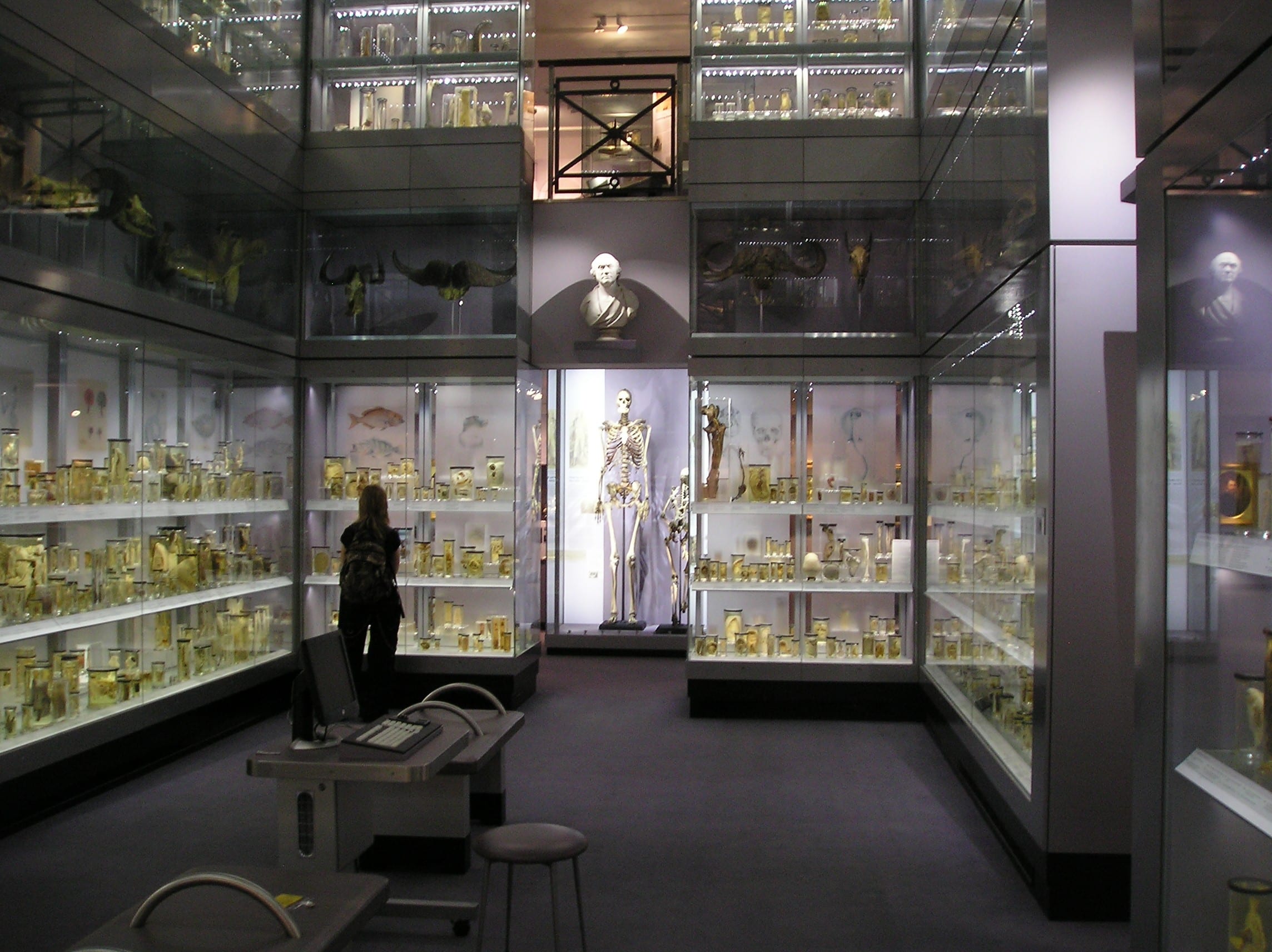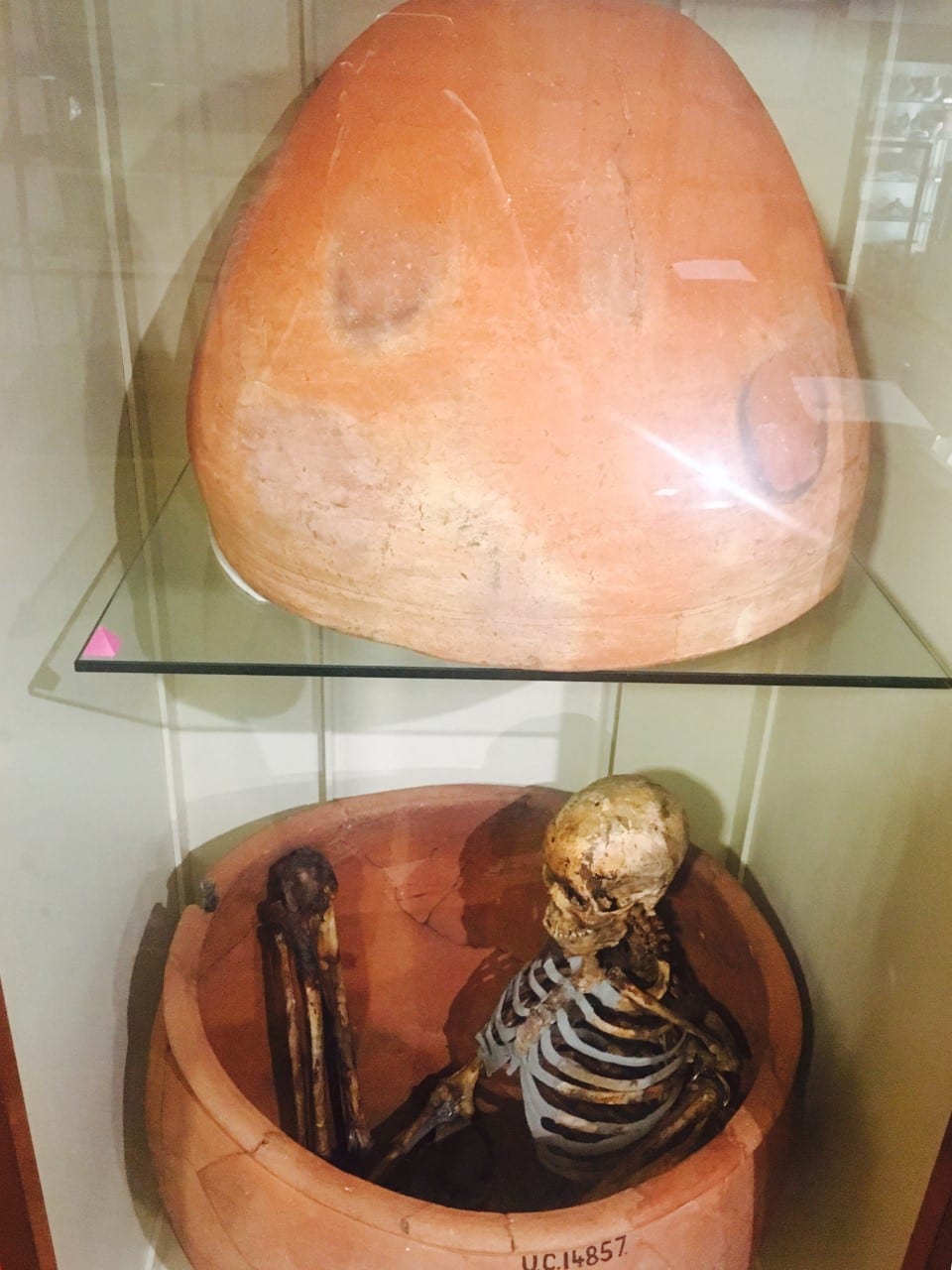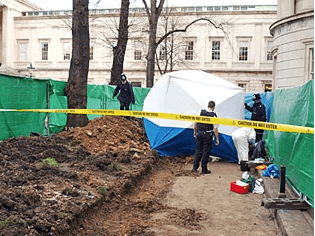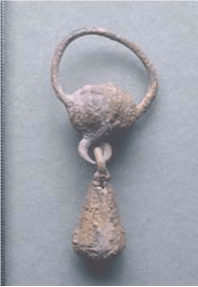Should human remains be displayed in museums?
By Julia R Deathridge, on 28 March 2017
If you have ever visited the Petrie Museum you are unlikely to have missed the man buried in a pot. In the past the pragmatic scientist in me had just regarded this as a skeleton in a pot; spending most of my time studying it to see how many of the different human bones I could still name from my undergraduate anatomy class (not that many it turns out!). However, a group of visiting American college students made me think about it differently. They were discussing the use of human remains in museum collections, their purpose, and the importance of displaying them respectfully. This opened up an interesting debate: how should human remains be displayed and should they even be displayed at all?
In the past human remains were regularly collected from excavation sites and displayed in museum cases with little thought put into the person that they once were. However, feelings towards the use of human remains in the UK have begun to change in recent years. In 2005 the Department for Culture, Media and Sport (DCMS) released a “Guidance for the Care of Human Remains in Museums” outlining a code of practice for the handling and displaying of human remains. Consequently, human remains have been given a unique status within collections and are no longer treated as objects.
Repatriation of human remains has also become more common with many indigenous communities requesting the return of their ancestors. Since 1996 both the UK and Australian governments have been committed to the return of indigenous remains to Australia and New Zealand. Over 1000 remains have been returned including 13 skulls and one limb, which were repatriated from UCL in 2007.
A display that has caused a large amount of controversy is the skeleton of “The Irish Giant” Charles Byrne. To avoid being dissected and used for medical research, Charles Byrne requested to be buried at sea. His request was ignored and his skeleton currently resides in a cabinet at the Huntarian Museum. Many have advocated for the return of his bones from the Huntarian allowing his burial wishes to be fulfilled. The Huntarian Museum, however, claim there is no direct evidence of his burial wishes and the educational benefits he provides to living and future generations of visitors is of greater value.
This brings up another important question: Does the educational benefit of human remains outweigh the rights of the dead? Human remains are an important teaching tool for anthropology and archaeology and are vital to the study of medical sciences. Use of human remains in exhibitions can also greatly stimulate a learning experience, allowing a much stronger connection to the culture that is being represented. A survey by English Heritage showed that only 9% of people opposed the display of human bones in museums suggesting there is still high demand for public display of human remains in museums. However, museums must be careful to utilise human remains in an appropriate context in order to educate rather than just to attract audiences.

Charles Byrne’s skeleton on display in the Huntarian Museum. (Photo credit: CC image courtesy of Paul Dean)
Many people do not consider the ethical issues of how the dead should be displayed in a collection until they are asked: what if that was your grandfather or great-great grandmother? Would you still consider this respectful? However, for many of the ancient human remains collected, including the man buried in the pot, their ancestry has been lost and we cannot know how their descendants, or they themselves, would feel about how their body is being used in the name of education. Although admittedly it is hard to argue that this is what the ancient Egyptians would have wanted.
In our current legal system we rely on our family and loved ones to carry out our burial wishes. But in their absence we too would have no control over this, much like the ancient Egyptians on display. I’m not sure I would be willing for my skeleton to be used to educate future generation about the irreversible impact mobile phones had on our postures and spines (I’m imagining my skeleton hunched over my iPhone whilst scrolling through Instagram). But others might feel differently.
As attitudes towards the displaying of human remains change, museum’s policies will have to adapt. Maybe in the future forms of consent will be required, similar to signing up for organ donation. But how many people will actually be willing to donate their bodies to museums? I guess only time will tell.
 Close
Close









